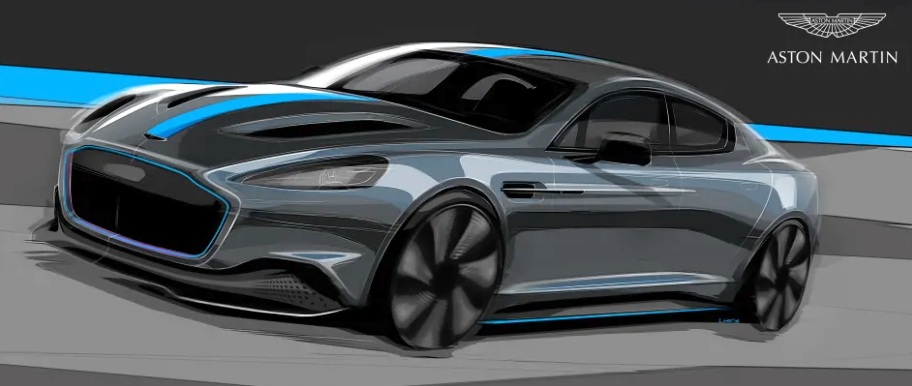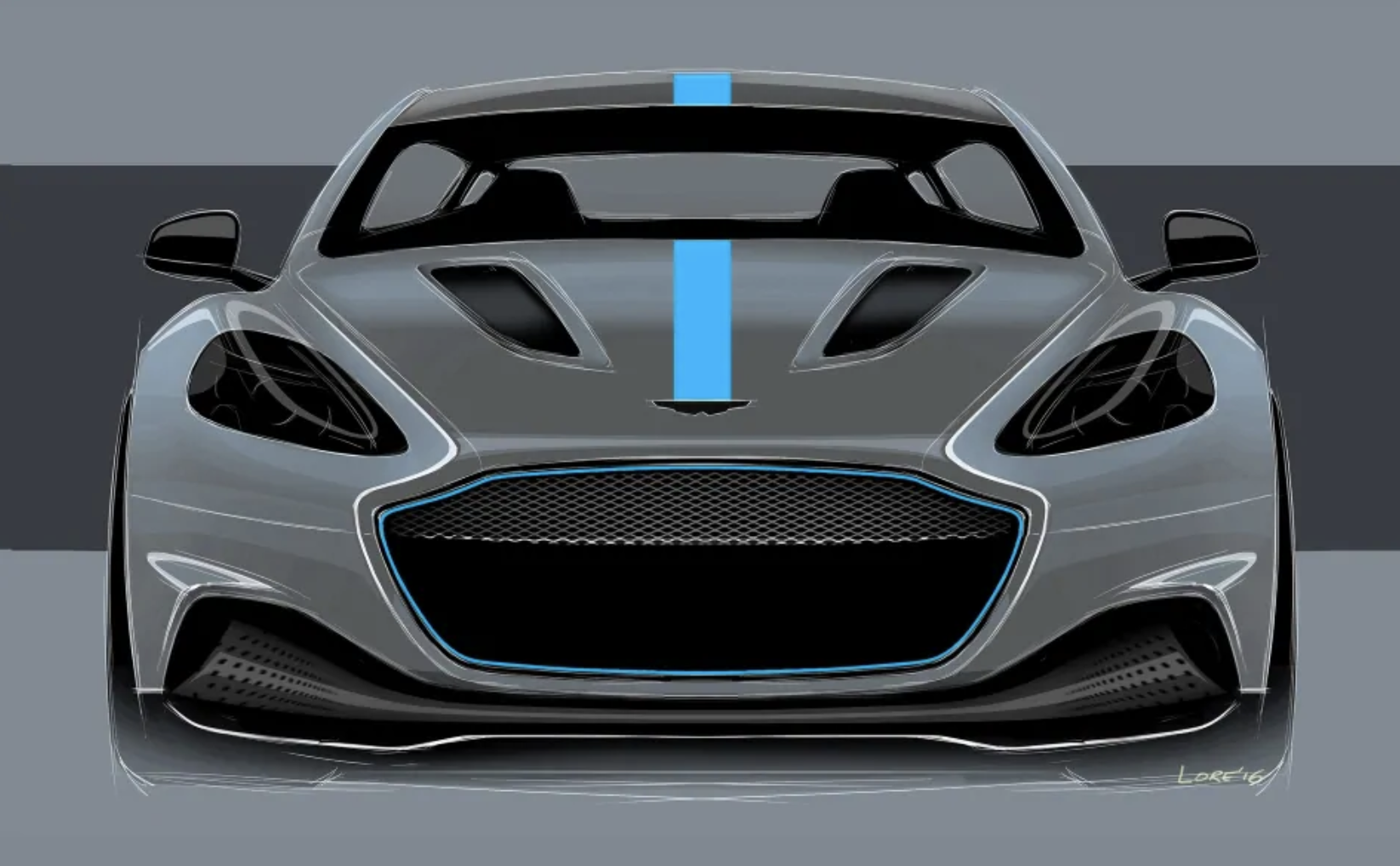Aston Martin Making Progress with its Production RapidE Electric
September 06 2019,

How does a 4-second sprint to 100km/h and a 400-km EV range sound to you? Aston Martin's beautiful RapidE electric vehicle was announced for production in June, and the company has been work...
RapidE EV targeting a 400-km range even when driven hard
If you've ever witnessed one of Aston Martin's V8 or V12 engines blast past at full song or even better, experienced the soul stirring sound from within the cockpit, hopefully from behind the wheel, word of an all-electric model about to be born from the storied Gaydon, Warwick, UK manufacturer might not elicit the same kind of enthusiasm that such news garners from carmakers with less performance-oriented hardware. Still, the RapidE promises plenty of get-up-and-go.
Aston is projecting an 800-horsepower EV that can sprint from standstill to 100km/h in just 4.0 seconds, plus a 250-km/h top speed, and a lengthy range of 400 kilometres without de-rating, a technical term for reducing power in order to extend range.
The details planned to achieve such performance haven't been disclosed, but it's thought a battery of at least 80kW should fit within the current car's prop shaft torque tube, ideal for its low, central location, and helpful in keeping the Rapide's passenger and cargo compartments as unaffected by the transition as possible.
On this note, it's undetermined whether the final RapidE will utilize the current single electric motor, like the "mule" currently being used for testing, or house two smaller motors at each rear wheel, being that both have advantages. The latter might allow for some extra frontal cargo space, which is always a bonus with grand touring cars like the Rapide. Aston is sharply focused on keeping the RapidE's weight as close to the current gasoline-powered model as possible, which will be important to achieving the EV's performance targets.

RapidE electric has a hard act to follow
As it is, today's Rapide S is a long, low and very lean four-door coupe, capable of whisking four adults from nil to 100km/h 4.4 seconds, and then on to a 327-km/h top speed, much thanks to a front mid-mounted 552 horsepower 6.0-litre V12 with 465 lb-ft of torque, plus a Touchtronic III eight-speed automatic gearbox capable of shift increments of just 130 milliseconds, which drives the limited-slip diff-enhanced rear wheels via a lightweight, quick spinning carbon-fibre prop shaft.
The RapidE was originally a concept developed in conjunction with the equally legendary performance car marque Williams, albeit the Grove, Oxfordshire, UK-company's heritage is in motorsport, specifically Formula 1 in which it's earned 16 championship titles by the likes of Alan Jones, Keke Rosberg (last year's F1 champion Nico Rosberg's father), Nelson Piquet, Nigel Mansell, Alain Prost, Damon Hill, and Canada's own Jacques Villeneuve. It also has a less known engineering division.
Williams Advanced Engineering, which also designed and assembled the first battery system for the fully-electric open-wheel FIA-sanctioned Formula E championship, has been partially responsible for the RapidE's development, the EV's full-scale production initially planned for right about now. Unfortunately the previous production partner, China's LeEco, a cellphone and streaming firm, pulled out due to financial problems, so instead Williams will take over the engineering integration of a small 155-unit RapideE run set to arrive in 2019.
"Williams Advanced Engineering has always endeavoured to work collaboratively with its customers to meet their sustainability challenges and find energy efficient solutions," said Paul McNamara, Technical Director at Williams Advanced Engineering. "For today's car manufacturers, this is particularly important as legislation demands more energy efficient vehicles. This project with Aston Martin will draw on the extensive battery and EV experience we have accumulated and we are extremely pleased to be supporting this prestigious British company with their future electrification strategy."

RapidE EV is a work in progress
The upcoming RapidE, which appears as if it's based upon the Rapide AMR concept, looks much like a regular Rapide in its current test mule phase, other than blue accents and unique RapidE badging with a stylized plug forming from the final E's middle prong. Inside, the RapidE's instrument panel gets battery life and regenerative braking indicators replacing some of the now redundant gasoline engine's gauges. This said it's not expected the RapidE interior will deviate much more from the gasoline-powered car's cabin, other than trim.
Likewise, the RapidE's suspension should carry forward mostly unchanged. The prototype rides on an identical setup to the current V12-powered road car, and while the former is not ready for primetime yet, Aston will need to keep RapidE production costs within reason. So far the prototype doesn't include any electronic driver assistance systems such as stability-control software, while the engineering team hasn't finished its cooling package either, this necessary to keep the battery from overheating-the radiator now unnecessary.
Aston and Williams are charging ahead to solve such issues, all of which are necessary hurdles for any manufacturer to overcome when transforming a gasoline-powered vehicle to fully electric, and the finished product should coincide with the launch of Aston's new DBX crossover SUV and Lagonda luxury sedan. We'll have to wait to see if EV versions of these latter two models materialize in production form (the DBX concept incorporated four wheel-mounted electric motors), but it only makes sense being that some of the British brand's most important markets are planning to eradicate internal combustion engines in the not too distant future.
"Having unveiled the RapidE Concept back in October 2015 we reach another milestone with the confirmation that we are now putting the first all-electric Aston Martin into production," said Dr. Andy Palmer, Aston Martin's President and CEO. "RapidE represents a sustainable future in which Aston Martin's values of seductive style and supreme performance don't merely co-exist alongside a new zero-emission powertrain, but are enhanced by it. The internal combustion engine has been at the heart of Aston Martin for more than a century, and will continue to be for years to come. RapidE will showcase Aston Martin's vision, desire and capability to successfully embrace radical change, delivering a new breed of car that stays true to our ethos and delights our customers."

Gasoline power to still have role in Aston Martin's future plans
It's good to hear Mr. Palmer confirm that internal combustion engines won't disappear from the automaker's lineup entirely, although their future availability will hardly matter in jurisdictions planning to totally eradicated them, such as Aston's own Britain that's promised to ban diesel and gasoline-powered engines by 2040, following a similar position across the English Channel in France, and since followed up by comparable sentiments in important premium car markets such as California and China, the latter already a leader in electric car development and production.
Such steps are arguably important for the greenification of the world, depending on how the electricity is sourced, but for performance car enthusiasts the thought of never again hearing the glorious mechanical machinations of an Aston Martin's internal combustion engine are just too sad to contemplate. Still, being how important electric powertrains are to Aston's low- and zero-emission Second Century Plan strategy, the RapideE is just the beginning. In fact, electric propulsion will be part of every Aston Martin by the mid-2020s, whether in the form of full electric power or hybrid, and EVs are expected to make up 25 percent of A-M sales by 2030.
Story credits: Trevor Hofmann, Canadian Auto Press
Photo credits: Aston Martin
Copyright: Canadian Auto Press Inc.
Photo credits: Aston Martin
Copyright: Canadian Auto Press Inc.


